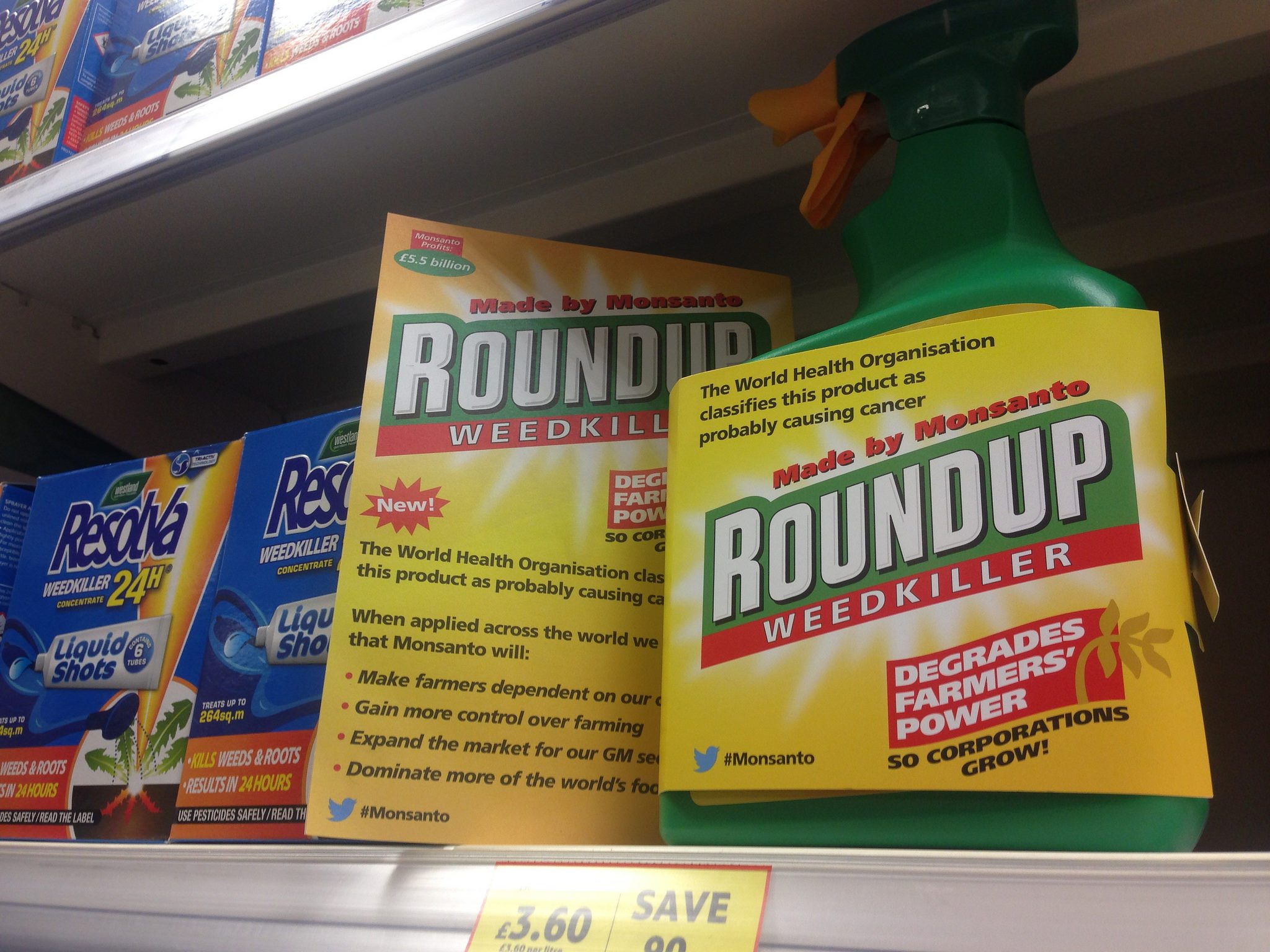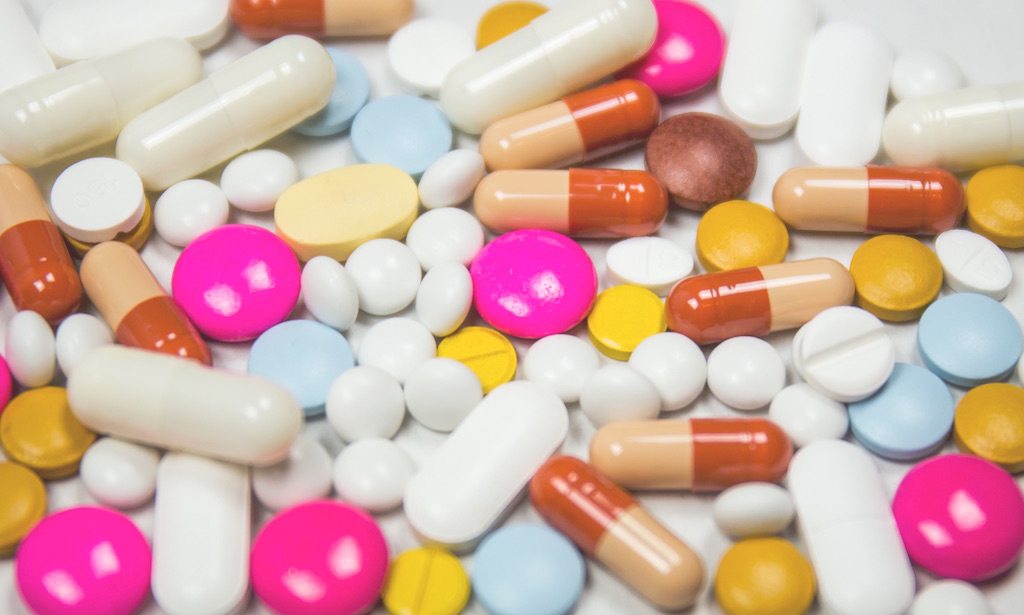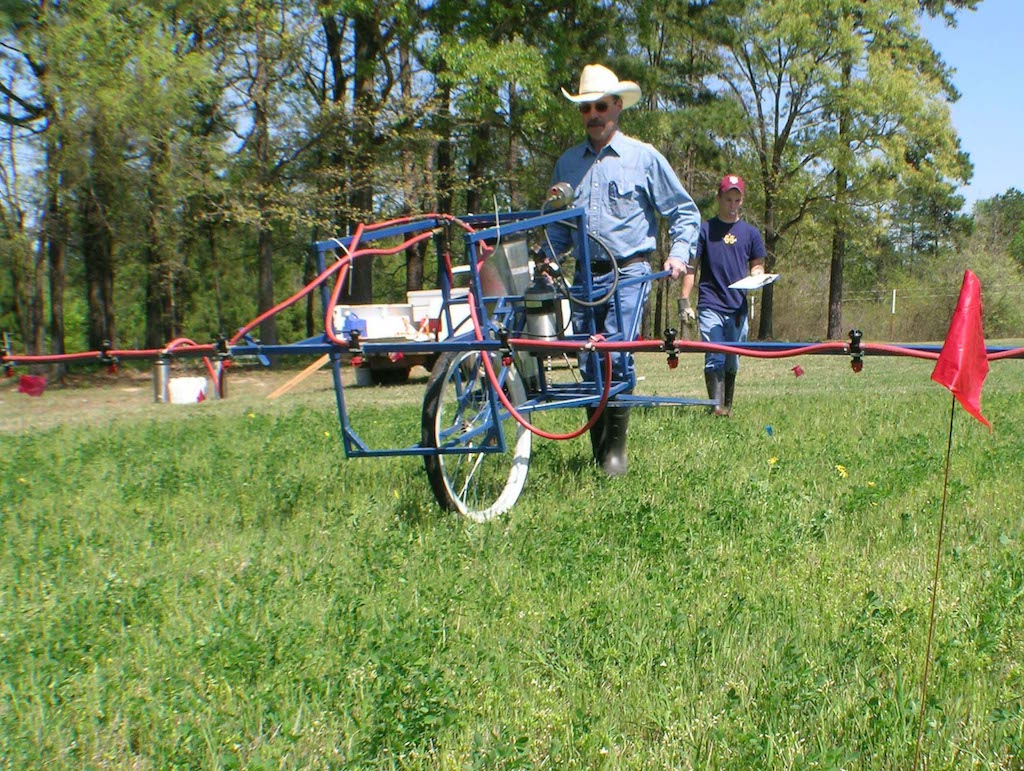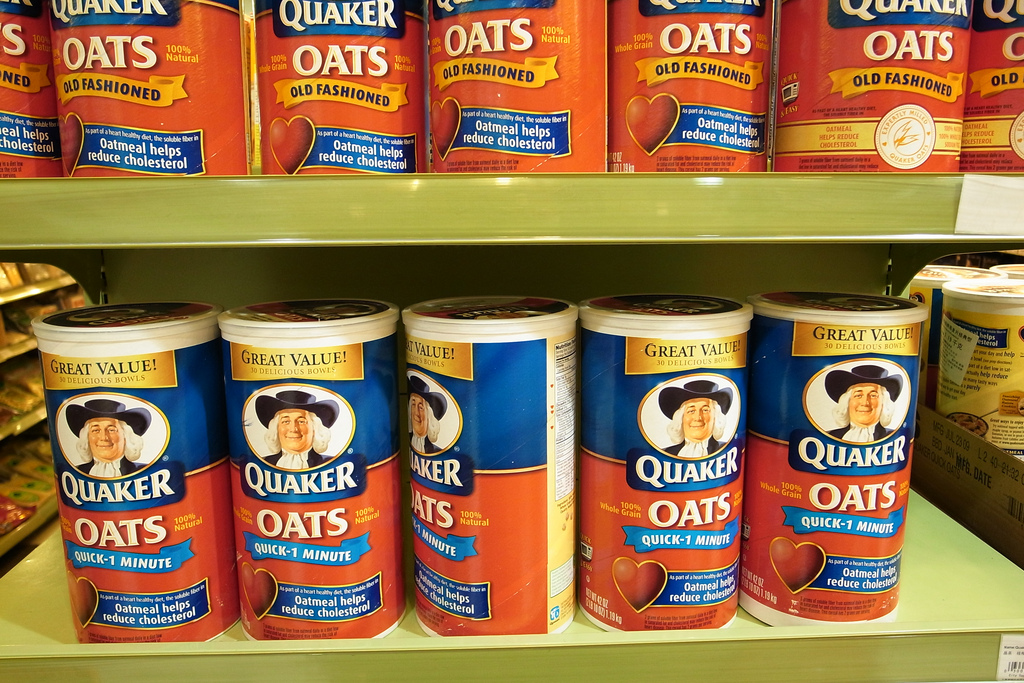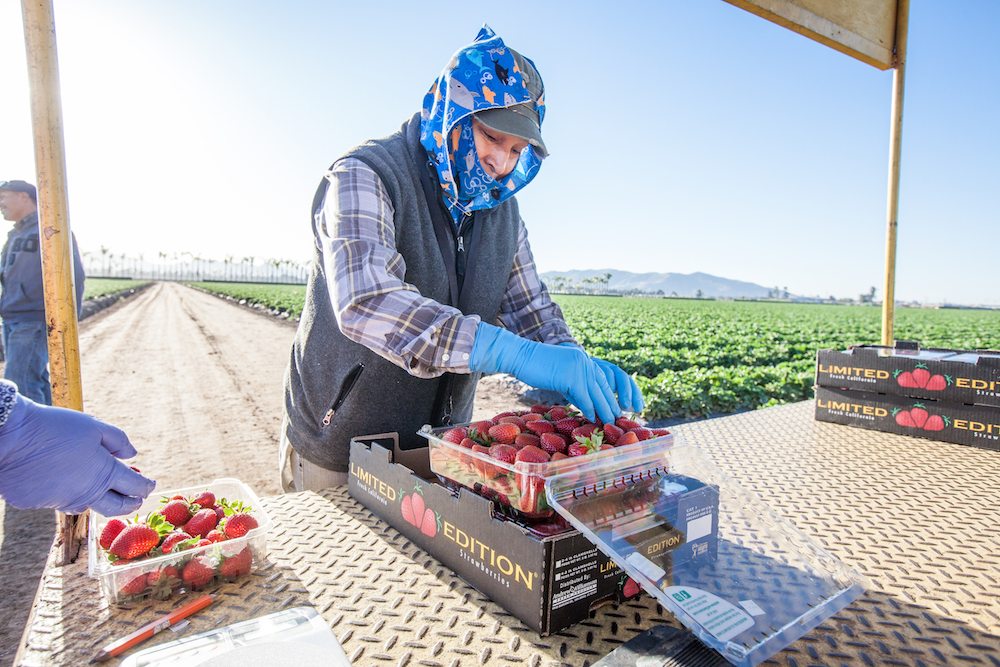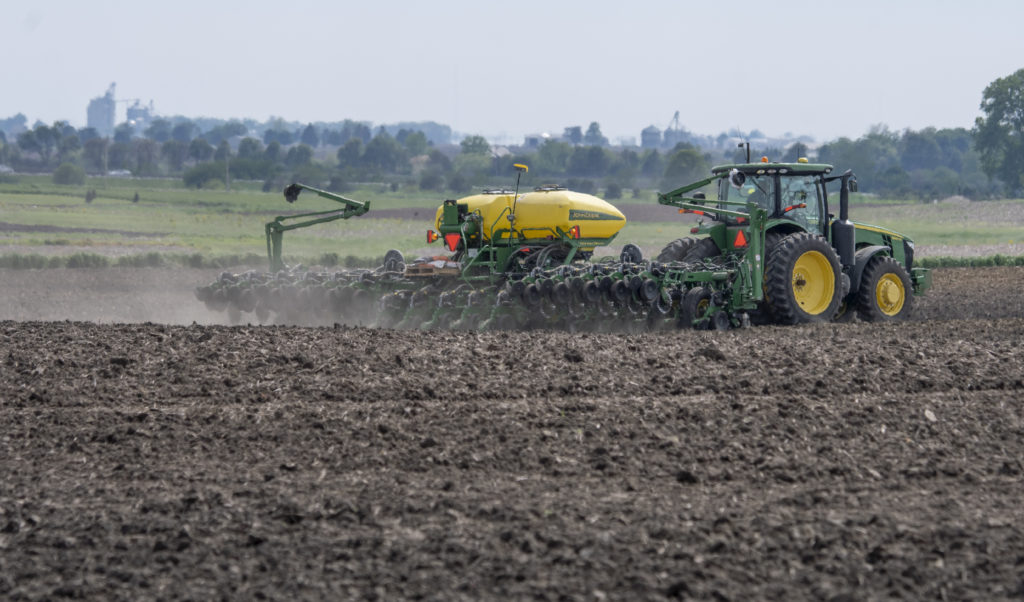
Darrell Hoemann/The Midwest Center for Investigative Reporting
Farmers have been using the weed killer glyphosate—a key ingredient of the product Roundup—at soaring levels, even as the chemical has become increasingly less effective and as health concerns and lawsuits mount.
Nationwide, the use of glyphosate on crops increased from 13.9 million pounds in 1992 to 287 million pounds in 2016, according to estimates by the U.S. Geological Survey.
Farmers in those 12 states—including Illinois, Indiana, Iowa and Nebraska—grow most of the country’s soybean and corn crops. Glyphosate is now the primary way farmers manage weeds that would otherwise reduce the amount of grain they can produce. The Midwest accounts for 65 percent of the nation’s use of glyphosate for crops, according to the Center’s analysis.
The estimates are from data collected through surveys of farms and may be high in some cases. However, the estimates provide an overview over decades on how dramatically glyphosate use has increased.
As a caution, the Midwest Center reviewed data with low estimates of pesticide use on crops and crop fields, to avoid overestimation. And not all crops can be sprayed with glyphosate. Therefore, the rate applies only to crops engineered to survive the pesticide.
Roundup was manufactured by agriculture company Monsanto until it was bought by German pharmaceutical company Bayer in 2018.
Once thought of as a miracle product, over-reliance on glyphosate has caused weeds to grow resistant to the chemical and led to diminished research and development for new weed management solutions, according to Bill Curran, president-elect of the Weed Science Society of America and emeritus professor of weed science at Penn State University.
“We’re way over-reliant on Roundup,” Curran said. “Nobody thought we were going to be dealing with the problems we are dealing with today.”
Meanwhile, juries have recently awarded at least $2.2 billion in damages to plaintiffs in three separate cases who claimed that glyphosate caused the cancer, non-Hodgkin lymphoma.
Glyphosate is at the center of thousands of more similar lawsuits against Bayer. As the company faces the fourth lawsuit over Roundup this August in St. Louis County Circuit Court, the company is also receiving backlash from investors and the public. Bayer’s stock price has dropped more than 40 percent since it bought Monsanto.
 The Midwest Center for Investigative Reporting
The Midwest Center for Investigative Reporting Map of glyphosate use by state in 2016.
The EPA, during a routine review of its glyphosate registration, said earlier this year glyphosate does not cause cancer, but the International Agency for Research on Cancer in 2015 classified glyphosate as “probably carcinogenic to humans.”
The U.S. Food and Drug Administration has reported trace amounts of glyphosate in food samples after testing for the first time in 2016, though levels remained below acceptable thresholds. The Centers for Disease Control and Prevention has called for more research on the chemical’s effects on humans.
Resistance to glyphosate grows
Despite warning that overuse could lead to weed resistance, manufacturers of glyphosate have continued selling the product to farmers at increasing rates.
James Benham has been farming in Southeast Indiana for nearly 50 years. Benham said, as resistance grew, Roundup went from a cure-all to a crutch.
“Sometimes if you timed it just right, you could get away with just one spraying. Now we’re spraying as often as three or four times a year,” he said.
 Christopher Walljasper/The Midwest Center for Investigative Reporting
Christopher Walljasper/The Midwest Center for Investigative Reporting After farming tobacco, corn and soybeans for more than 50 years, James Benham is planting hemp on his farm near Versailles, Indiana.
Benham said farmers continue to spend more on seed and chemicals but aren’t seeing more profit.
“That puts the farmer in that much more of a crisis mode. Can’t do without it, can’t hardly live with it,” he said.
As glyphosate became less effective, farmers also turned to even more pesticides to try and grow successful crops each year.
Glyphosate was first introduced by Monsanto in 1974. But it wasn’t until the 1990s—when the company released genetically modified corn, soybean, and cotton seeds that could withstand the weed killer—that the use of glyphosate saw a dramatic increase, said Sarah Ward, associate professor of plant genetics at Colorado State University.
“I think it did become too much of a good thing. I think growers locked on to the simplicity, and the effectiveness of using glyphosate as your primary, or in many cases your only means of weed control,” Ward said.
When the patent for glyphosate expired in 2000, it opened the door for generic production, and usage increased even more.
By 2007, the University of Nebraska’s Institute of Agriculture and Natural Resources noted at least 40 generic glyphosate-based herbicides, including offerings by DowDupont (now Corteva Agriscience) and Syngenta.
Charla Lord, spokeswoman for Bayer, said in an email statement that glyphosate is safe and still effective for farm and residential use.
But as glyphosate use shows little sign of slowing, some experts fear what it means for farmers and consumers.
In 2017, Monsanto reported net sales of $3.7 billion in its agricultural productivity division, which includes glyphosate, up $213 million from 2016, according to its annual report.
Market researchers predict the glyphosate market to grow to $8.5 billion to $10 billion annually by 2021 up from $5 billion now.
“The increase in agricultural productivity reflects increased volume of Roundup and other glyphosate-based herbicides globally,” Monsanto said in the report.
Market researchers predict sales of glyphosate will be between $8.5 billion and $10 billion by 2021.
Game changer
Before glyphosate was available, farmers used a variety of other pesticides to combat specific weeds.
Jack Boyer, a farmer who plants around 800 acres of corn, soybeans, and cereal rye in northeast Iowa, said before Roundup, he would apply a mixture of pesticides to the soil before planting, or spray it on patches of weeds after the crop emerged from the ground.
 Darrell Hoemann/The Midwest Center for Investigative Reporting
Darrell Hoemann/The Midwest Center for Investigative Reporting Seed test plot at a Pioneer research facility near Champaign, Illinois. Pioneer is a subsidiary of DowDupont.
“It was quite a labor-intensive process, as well as [using] more chemicals,” Boyer said. “When Roundup, or glyphosate came along, it made things a whole lot simpler and really cleaned up the area, for a long time.”
Even after applying pesticides, farmers or farm workers would walk the fields, chopping weeds by hand. “As a young teenager, I spent a good chunk of my summer with a hoe in hand, chopping those weeds out,” said Mary Boote, chief executive officer of Global Farmers Network, a non-profit group based in Des Moines, Iowa, that advocates for farmers around the world.
In the late 1990s, when glyphosate was combined with genetically modified seeds that could withstand the herbicide, it was a scientific breakthrough in crop biotechnology, according to Boote. She said glyphosate did more than just help farmers grow better crops.
“The advent of glyphosate was a game-changer. Not only did it effectively kill the weeds that were threatening and taking away maximum crop production, there was a quality-of-life issue,” Boote said.
The combination of planting glyphosate-resistant seeds, then applying the chemical over the top of the crop, allowed farmers to apply a fewer number of chemicals. This led to the rise of no-till farming, which prevented soil erosion.
Alan Kadolph, a farmer in Hardin County, Iowa, said some of his peers moved away from other weed management practices (like cultivation or hand-chopping) altogether.
Victims of success
Dane Bowers, technical product lead for herbicides at Syngenta, said glyphosate worked so well in the late 1990s and early 2000s, people didn’t believe that weeds could develop a resistance to it .
“We’re kind of a victim of our own success here,” Bowers said. “It is such an effective herbicide, it was really difficult to convince people to reduce their reliance on it. It made weed control so simple, effective and affordable.”
But with that dramatic shift to glyphosate came a drastic increase in use as well, especially in the Midwest. Farmers were applying it multiple times a year to keep weeds at bay. Kadolph said some farmers got used to how versatile glyphosate could be.
“It was so easy. You didn’t have to worry about what stage the weeds were (at) out in your field. You just changed your rate of Roundup. ‘I’m not going to spray this week, I’ll spray next week,’” he said.
Aaron Hager, a weed scientist at the University of Illinois, said the over-reliance on glyphosate accelerated the growth of weed resistance.
“In any biological system, when you make such a dramatic shift to a very limited number of options to control a pest, that system is very likely going to evolve,” Hager said.
Bayer’s Lord said weed resistance is not a new problem for farmers. “Farmers have been dealing with this issue of herbicide resistant weeds since the 1950s, and it is a reality that growers know how to manage,” she said in an email.
But Ward said this resistance is different because of how widespread glyphosate use has become. “Growers locked on to the simplicity, and the effectiveness of using glyphosate as your primary, or in many cases your only means of weed control,” she said.
Charles Benbrook, an agricultural economist who has published several studies on glyphosate, and testified as an expert witness on behalf of plaintiffs, said the overuse of glyphosate has presented farmers with real financial challenges.
“The sad reality is that, weed management on conventional, biotech-dependent corn, soybean, and cotton farms is out of control,” he said. “It’s created a serious economic problem for farmers, because they’re spending far more for seed and weed control.”
 Darrell Hoemann/The Midwest Center for Investigative Reporting
Darrell Hoemann/The Midwest Center for Investigative Reporting Soybean harvest underway near Monticello, IL
In 2017, farmers spent $17.6 billion on chemicals, according to the USDA’s 2017 Census of Agriculture.
That more than doubled in 20 years. During the same time, farmers spent $21 billion on seed, up from $6 billion in 1997, when genetically modified seeds were just hitting the market.
The adoption of genetically modified seeds was rapid. For example, genetically engineered corn made up 17 percent of all corn planted in 2000; by 2016, 92 percent of all corn planted was genetically engineered, according to USDA data.
“It’s just a whole different ballgame, because of how powerful, and how successful glyphosate has become,” Curran said.
This story was republished from the Midwest Center for Investigative Reporting, a nonprofit, online newsroom offering investigative and enterprise coverage of agribusiness, Big Ag, and related issues through data analysis, visualizations, in-depth reports, and interactive web tools. Visit its website here.


